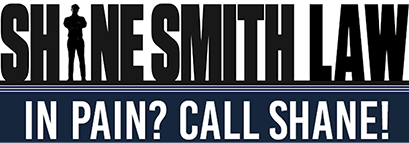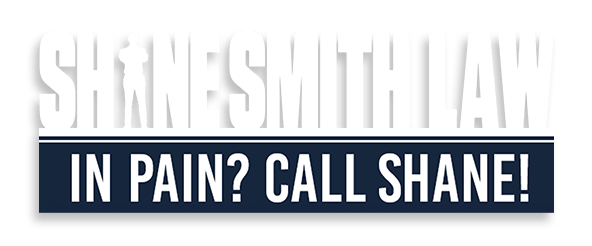Accident Reconstruction Techniques
Fundamentals of Collision Analysis
Accident reconstruction is a meticulous process that combines the principles of physics and engineering to piece together the events leading up to a collision. Experts in this field apply their knowledge to understand the dynamics of the accident, such as the speed of the vehicles, their trajectories, and the point of impact. This analysis often involves a detailed examination of the damaged vehicles and the accident scene, which can reveal critical information about the circumstances of the crash. By interpreting these clues, reconstruction specialists can create a scientifically-backed narrative that illustrates how and why the accident occurred, providing invaluable insights that go beyond what witnesses and involved parties may recall.
The role of technology in accident reconstruction cannot be overstated. From high-tech simulation software that models collisions to drones that capture aerial views of the accident scene, these tools have revolutionized the field. Laser scanning systems, for instance, create precise 3D maps of the site, allowing for an accurate assessment of distances and spatial relationships. These technological advancements not only enhance the accuracy of the reconstruction but also allow experts to visualize and communicate complex scenarios in a clear and understandable manner. As technology continues to evolve, it promises to further refine the capabilities of accident reconstruction professionals.
Evidence and Data Collection
Gathering Physical Evidence
The collection of physical evidence is a critical step in the accident reconstruction process. This tangible proof, which includes skid marks, vehicle positioning, and any debris from the collision, serves as the foundation for reconstructing the event. Skid marks, for example, can indicate braking patterns and the direction of the vehicles, while the final resting positions provide clues about the force and direction of impact. Environmental factors such as weather conditions, road quality, and lighting also play a significant role in understanding how the accident occurred. Collecting and analyzing this evidence requires a keen eye for detail and an understanding of how these elements interact in a collision.
Utilizing Eyewitness Testimony
Eyewitness accounts can be both valuable and challenging in the context of accident reconstruction. On one hand, witnesses provide firsthand observations that may not be apparent from the physical evidence alone. Their testimonies can offer additional context, such as the behavior of the drivers or unusual circumstances that may have contributed to the accident. On the other hand, human memory is fallible, and eyewitness reports can be influenced by stress, personal biases, or the passage of time. As such, while eyewitness testimony can be a useful component of the reconstruction, it must be weighed against the objective evidence and analyzed with a critical eye to ensure accuracy.
Legal Implications of Reconstruction Findings
Impact on Liability and Negligence Determinations
The findings from an accident reconstruction can have a profound impact on the determination of liability and negligence in personal injury claims. By establishing the sequence of events and identifying contributing factors, reconstruction reports can clarify who was at fault and to what extent. This is particularly important in states where comparative negligence laws apply, as the degree of fault can directly affect the compensation awarded to the injured parties. A thorough and scientifically sound reconstruction can be the difference between a favorable outcome and an unjust one, making it a crucial element in the pursuit of justice for those affected by traffic accidents.
Admissibility of Reconstruction Reports in Court
For an accident reconstruction report to be admissible in court, it must meet certain criteria that establish its reliability and relevance. The report must be based on scientifically accepted methods and principles, and the expert presenting it must demonstrate that the analysis was conducted in a consistent and methodologically sound manner. Additionally, the report should be clear, concise, and free of speculative conclusions. The admissibility of these reports is subject to the scrutiny of the legal system, and it is not uncommon for opposing parties to challenge their validity. Therefore, the meticulous preparation and presentation of reconstruction reports are essential for their acceptance as evidence.
Expert Testimony in Personal Injury Cases
Qualifications of Accident Reconstruction Experts
Accident reconstruction experts play a pivotal role in personal injury cases, providing testimony that can illuminate the facts of the case. To be considered a reliable witness, these professionals must possess a combination of formal education, specialized training, and practical experience in the field of accident reconstruction. Certifications from recognized professional organizations can also attest to their expertise and commitment to ongoing education. The qualifications of these experts are not just academic; they must also have a proven track record of applying their knowledge to real-world accidents, ensuring that their testimony is grounded in practical, hands-on experience.
Challenges to Expert Testimony
Despite their qualifications, expert witnesses in accident reconstruction can face challenges to their testimony. Opposing counsel may question the methods used, the interpretation of data, or even the expert's credentials. To withstand these challenges, experts must be prepared to explain their methodologies and findings in a manner that is both authoritative and accessible. They must also be ready to defend their conclusions against cross-examination, which can be particularly rigorous. The ability of an expert to convey complex information clearly and to maintain their composure under scrutiny is as important as their technical expertise in ensuring that their testimony is received favorably by the court.
Maximizing Personal Injury Claim Outcomes
Integrating Reconstruction Results
In personal injury claims, integrating the results of accident reconstruction can significantly strengthen a case. By providing a factual basis for the events that occurred, these findings can corroborate the claimant's account and demonstrate the extent of the other party's liability. Attorneys specializing in personal injury law, such as those at Shane Smith Law in Charlotte, NC, understand the importance of this evidence and how to leverage it effectively. They work closely with reconstruction experts to ensure that the results are presented in a way that aligns with the overall strategy of the claim, aiming to maximize the compensation for their clients.
Communicating Complex Information to a Jury
Presenting technical data to a jury in a way that is both understandable and compelling is an art form. Juries are composed of individuals from various backgrounds, most of whom are not experts in accident reconstruction. Therefore, it is crucial for attorneys to distill complex information into key points that are easily digestible. Using visual aids, such as diagrams and animations, can help jurors visualize the accident and grasp the expert's conclusions. At Shane Smith Law, the attorneys are adept at translating intricate reconstruction results into persuasive narratives that resonate with juries, enhancing the likelihood of a favorable verdict for our clients.
If You Have Been in an Accident, Contact Shane Smith Law
If you or someone you love has been involved in an accident, and you believe that another party's negligence is to blame, do not hesitate to reach out to Shane Smith Law. Our team of experienced personal injury attorneys is well-versed in utilizing accident reconstruction to build strong cases and secure the justice and compensation our clients deserve. Contact us today to discuss your case and learn how we can assist you in navigating the complexities of personal injury law.
Send Shane Smith Law a message online or call (980) 246-2656.


-copy-10[1].2401091743331.jpg)